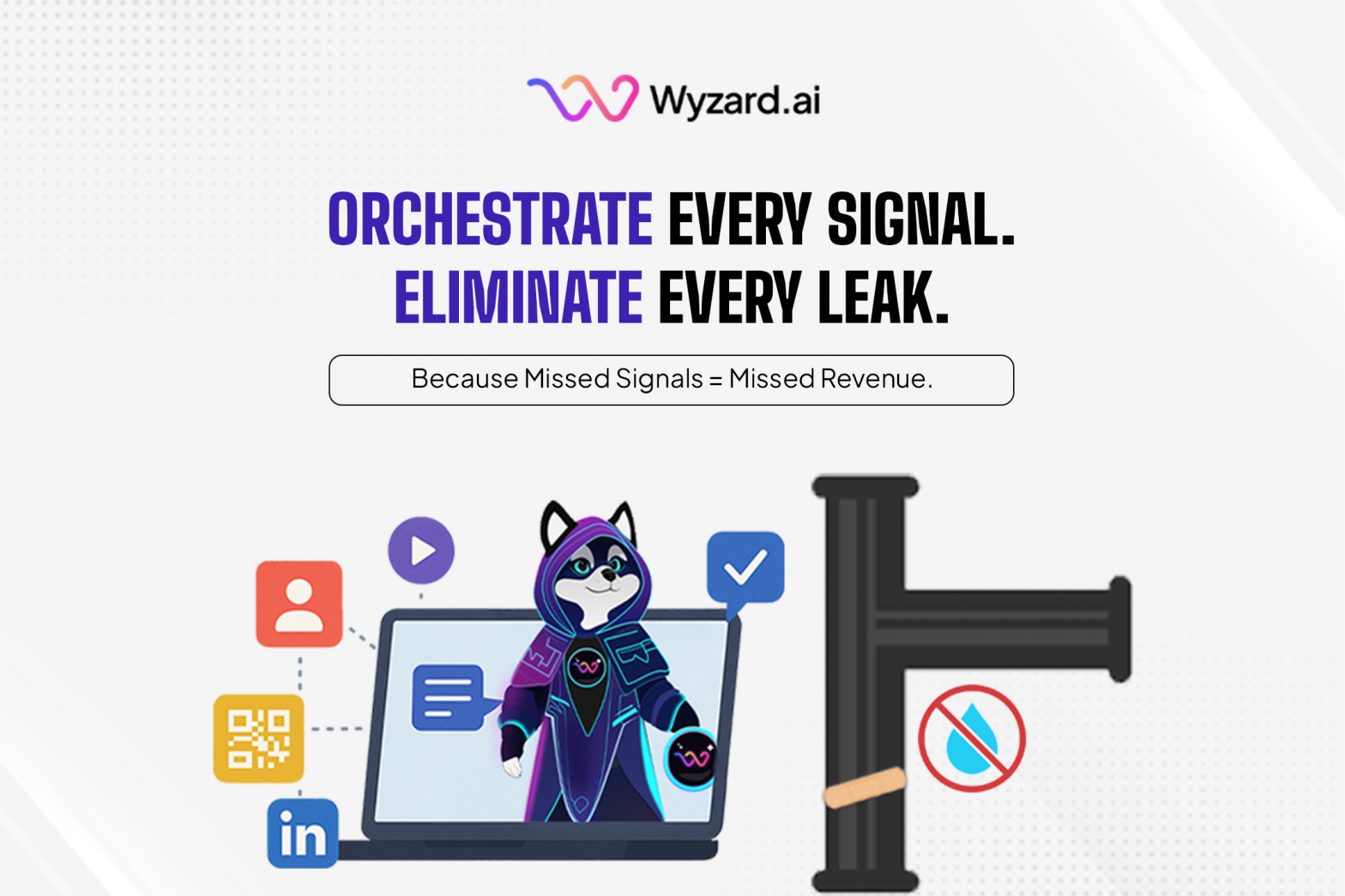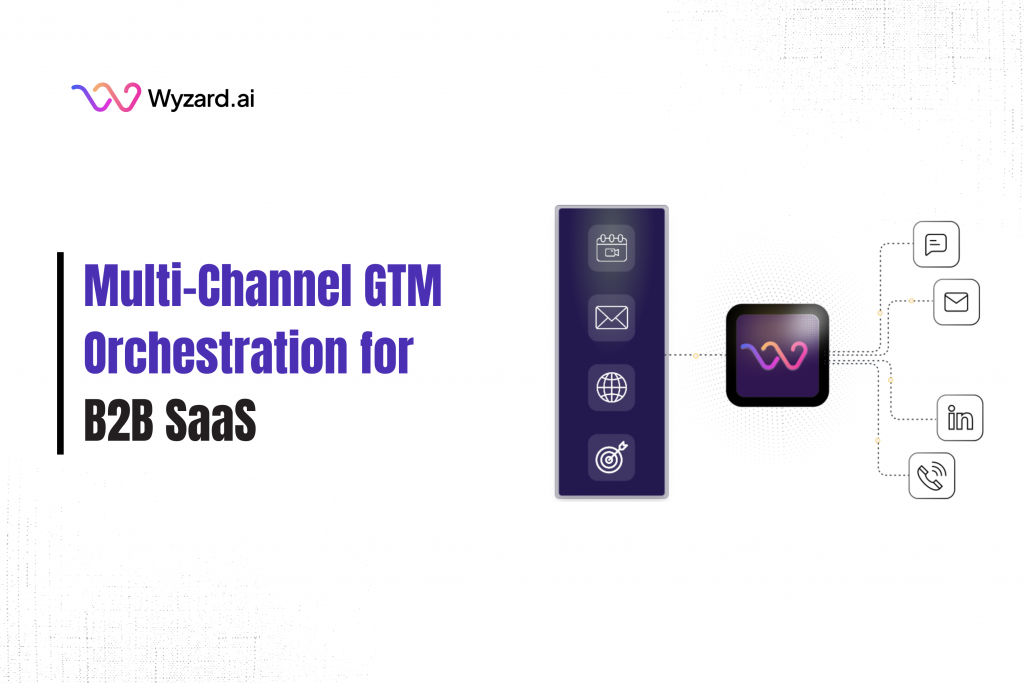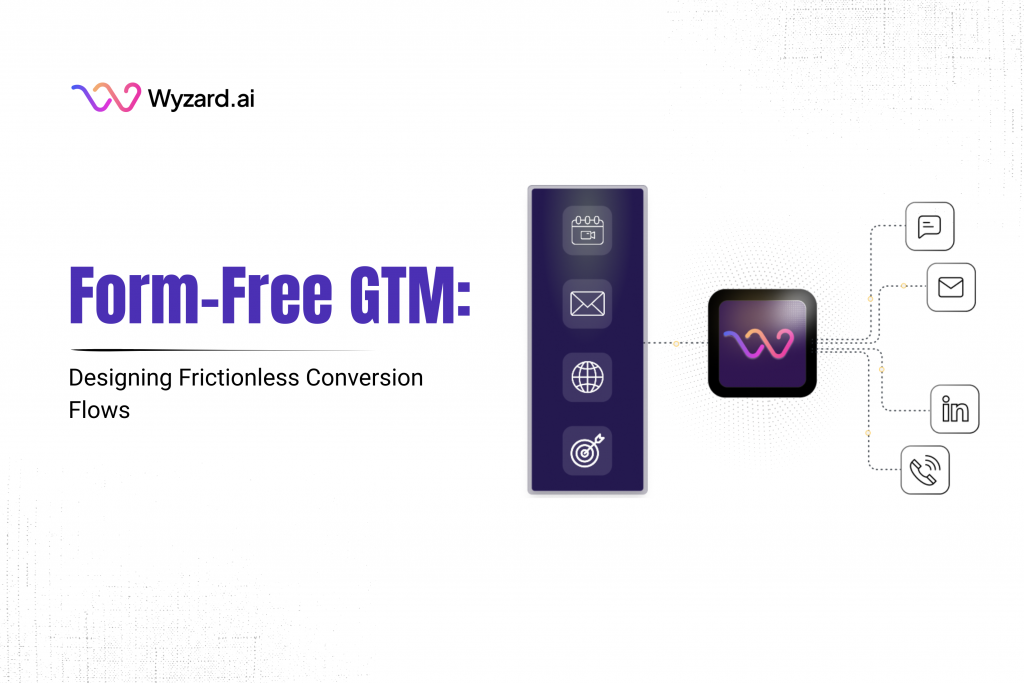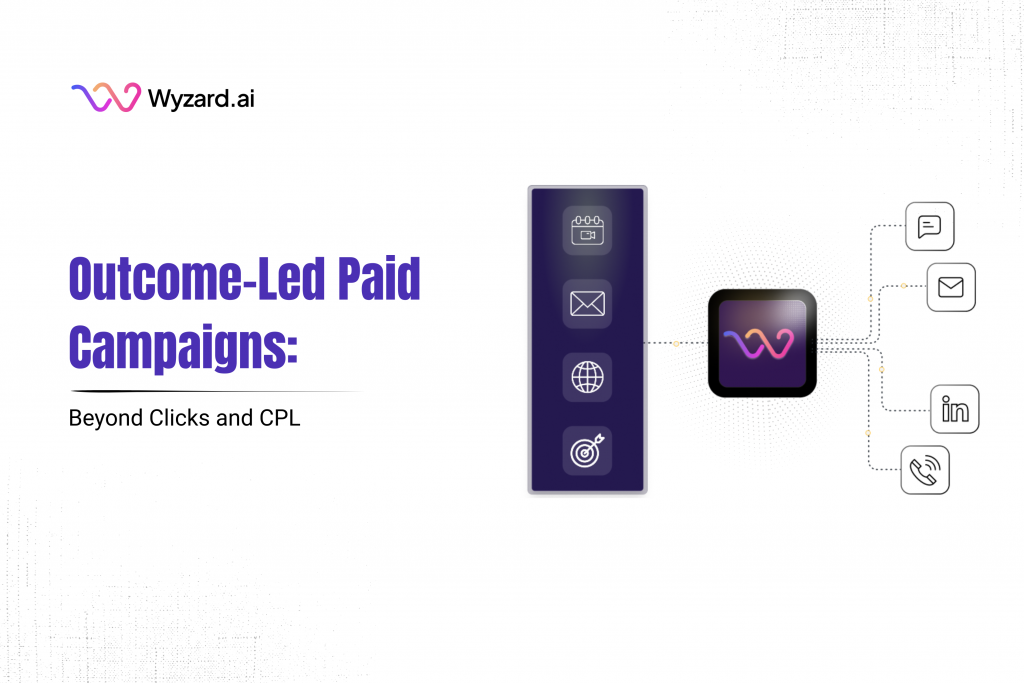If you run marketing or revenue for a B2B SaaS company, the goal is clear: turn GTM spend into ...

Subscribe Now
If you are a CMO, your forecast is only as good as the integrity of your CRM. You have dozens of touchpoints feeding the funnel, yet opportunities still stall, reps chase the wrong accounts, and finance questions your numbers. Wyzard.ai sits in that gap. We are The Signal-to-Revenue AI that captures buyer signals the moment they happen and turns them into action across channels, so Revenue orchestration finally reflects what buyers are actually doing.
The cost of a messy pipeline for CMOs
I often hear a version of the same story from marketing leaders. Traffic and form fills are healthy, paid is dialed in, webinars and events are packed, yet revenue feels lumpy. The culprit is usually not demand. It is the state of the CRM. Duplicates hide true volume. Stages drift from reality. Owners change without handoff. Forecasts wobble because the system lags behind the buyer. Companies that contact leads within first few minutes are more likely to qualify them than those that waited longer.
This is where Revenue orchestration must evolve from static workflows to responsive, signal-driven motion.
What “revenue signals” add to your CRM
Revenue signals combine behavioral cues and system events into context that a forecast can trust. Think webinar attendance for a buying committee member, a pricing-page return visit, an inbound reply to a nurture, or a badge scan at a field event. Traditional CRMs store the facts. Revenue orchestration uses those facts to trigger the right next step across channels in real time. That shift improves pipeline hygiene, strengthens data quality, and makes attribution more honest. It also supports better governance, because actions are logged and auditable.
A practical framework for clean, signal-driven pipelines
1) Audit and deduplicate – Start with a monthly crawl to merge people, accounts, and opportunities. Enforce a single source of truth for enrichment. The goal is simple. If a person shows up from PPC today and at your booth next week, revenue orchestration should treat them as one buyer moving through one journey.
2) Standardize stages and taxonomy – Align your stage definitions with exit criteria that a system can validate. “Verbal commit” means an explicit email or meeting note in CRM. “Sales accepted lead” means an assigned owner plus an automated acknowledgment. Clean language gives revenue orchestration something deterministic to work with.
3) Layer in signals – Add behavioral and intent inputs that your team already owns. Website depth, event scans, webinar attendance, product usage, email replies, LinkedIn ad engagement, and calendar outcomes. When signals are normalized, revenue orchestration can trigger actions that reflect real intent, not guesswork.
4) Automate stage updates and routing – If a prospect attends a webinar and replies to a follow-up, push to SAL automatically and notify the right owner. If an opportunity goes 14 days without activity, auto-progress or close-lost based on rules the team agrees on. This is the core of revenue orchestration. It prevents silent decay.
5) Monitor forecast accuracy with signal health checks – Track the ratio of signal-confirmed deals to total in-stage deals. Review conversion by signal type. Build guardrails that stop sandbagging and premature commits. The cleaner the signal layer, the more reliable the forecast.
Omnichannel, not chat-only
A modern plan does not live in a website widget alone. Revenue orchestration must cover every place intent shows up. Wyzard.ai engages when a visitor lands on pricing, when a lead gets scanned at an event, when someone clicks a LinkedIn ad, when they attend a webinar, and when they reply to a nurture email. We also support voice and human handoffs where that is the right move. Buyers choose channels. CMOs care that each moment triggers the right next step without new headcount.
How Wyzard.ai operationalizes the framework
Most teams have the right tools but miss the moment when a buyer is interested. Wyzard.ai connects your stack, captures every buyer signal live, and orchestrates the next action using WyzAgents across chat, email, LinkedIn, and voice with human oversight. Fewer leads are lost, engagement happens faster, and it mirrors the buyer journey.
A few examples of how this shows up in your day to day:
- A prospect visits pricing twice, then scans at your event. Wyzard.ai links those identities, enriches once, scores based on combined activity, and triggers rep outreach plus a short educational email. It ensures the opportunity stage advances only when the rep confirms the meeting.
- Your team runs a product webinar. Attendees who ask a technical question get a tailored sequence and a rep meeting offer. No-shows receive a replay and a 2-question prompt to capture objections. The signal path is logged so attribution and governance stay clean.
- A nurture reply hits your shared inbox at 9 p.m. local. Wyzard.ai routes instantly, acknowledges receipt, books if qualified, and updates the CRM with the new stage. Revenue orchestration means no manual triage or missed window.
Along the way, our “Goals” feature removes the friction from campaign setup. You describe the outcome, like “re-engage event leads who scanned but never met with sales” or “announce the new tier to product users.” Wyzard.ai drafts the email sequence, schedules it to the segment you select, and sends on time. It can create follow ups, product launch notes, and sequences to warm cold leads. CMOs get consistent execution without waiting on ad hoc copy. Operations gets predictable inputs that support pipeline hygiene and data quality.
Why this matters to forecasting
Forecast risk often comes from stale or partial data. Signals close that gap. They act when intent emerges, not weeks later.
Your forecast improves when the system reflects reality and responds to it, not when you add another spreadsheet.
What good looks like in 90 days
- Duplicate rate falls. Owner conflicts drop. Wyzard.ai routes leads consistently and stages reflect truth.
- Meetings from webinars, events, PPC, and inbound email replies increase because outreach matches the moment.
- Attribution questions calm down. Signals prove which channels start, influence, and close revenue, while governance makes audits straightforward.
- Forecast calls shift from “what changed” to “which signals are trending.” The team trusts the number.
CMOs do not need more dashboards. They need a system that sees intent across channels, takes the next step automatically, and records what happened. That is Revenue orchestration done right, and it is exactly what Wyzard.ai was built to deliver.Ready to see The Signal-to-Revenue AI in action and put clean signals behind your forecast? Book a demo.
Other blogs
The latest industry news, interviews, technologies, and resources.
Form-Free GTM: Designing Frictionless Conversion Flows
A visitor lands on your pricing page. They are ready to talk, not to wrestle with a 12-field form. ...

December 8, 2025
Outcome-Led Paid Campaigns: Beyond Clicks and CPL
You put serious money into paid media. Dashboards show strong CTR and healthy CPL. The next slide hits and ...

 We’ve secured funding to power Signal-to-Revenue AI to GTM teams globally. →
We’ve secured funding to power Signal-to-Revenue AI to GTM teams globally. →


